Molecular subtype analyses of Campylobacter spp. from Arkansas and California poultry operations
- PMID: 12450847
- PMCID: PMC134383
- DOI: 10.1128/AEM.68.12.6220-6236.2002
Molecular subtype analyses of Campylobacter spp. from Arkansas and California poultry operations
Abstract
Campylobacter isolates from diverse samples within broiler production and processing environments were typed by using flaA short variable region DNA sequence analysis. Sixteen flocks from four different farms representing two broiler producers in Arkansas and California were analyzed. Fourteen of the flocks (87.5%) were Campylobacter-positive; two remained negative throughout the 6-week rearing period. In general, multiple clones were present within a flock. Additionally, clones found within a flock were also present on the final product, although the diversity of Campylobacter spp. on the final product appeared to be reduced relative to that observed within the flock. Comparison of clones between flocks on the same farm revealed that some clones of Campylobacter persisted in multiple flocks. Furthermore, some clones were identified across the two farms that were under the same management. In two sampling periods, environmental isolates were positive for Campylobacter prior to flock shedding. Environmental samples associated with five additional flocks were positive for Campylobacter concomitantly with recovery of Campylobacter from the birds. Analysis of the environmental isolates that were positive prior to flock shedding demonstrated that in some instances the environmental isolates possessed genotypes identical to those of isolates originating from the flock, while in other cases the environmental isolates possessed genotypes that were distantly related to isolates obtained from the flock. Analyses of environmental isolates that tested positive concurrently with the positive isolates from the flocks demonstrated varied results; in some instances the environmental isolates possessed genotypes identical to those of isolates originating from the flock, while in other cases the environmental isolates possessed genotypes that were distantly related to isolates obtained from the flock. These data suggest that the external environment may contribute to Campylobacter contamination during poultry production and processing. However, environmental contamination with Campylobacter does not appear to be the sole contributing factor.
Figures
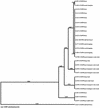
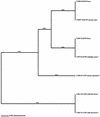
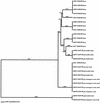

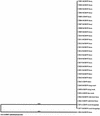
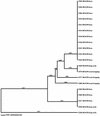
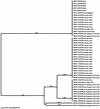
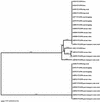
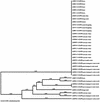
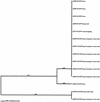
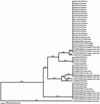
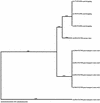
References
-
- Ayling, R. D., M. J. Woodward, S. Evans, and D. G. Newell. 1996. Restriction fragment length polymorphism of polymerase chain reaction products applied to the differentiation of poultry campylobacters for epidemiological investigations. Res. Vet. Sci. 60:168-172. - PubMed
-
- Berndtson, E., M. Tivemo, and A. Engvall. 1992. Distribution and numbers of Campylobacter in newly slaughtered broiler chickens and hens. Int. J. Food Microbiol. 15:45-50. - PubMed
-
- Blaser, M. J., and L. B. Reller. 1981. Campylobacter enteritis. N. Engl. J. Med. 305:1444-1452. - PubMed
-
- Bokkenheuser, V. D., and V. L. Sutter. 1981. Campylobacter infections, p. 301-310. In A. Balows and W. J. Hausler (ed.), Bacterial, mycotic and parasitic infections, 6th ed. American Public Health Association, Washington, D.C.
-
- Bryan, F., and M. Doyle. 1995. Health risks and consequences of Salmonella and Campylobacter jejuni in raw poultry. J. Food Prot. 58:326-344. - PubMed
Publication types
MeSH terms
LinkOut - more resources
Full Text Sources
Miscellaneous

